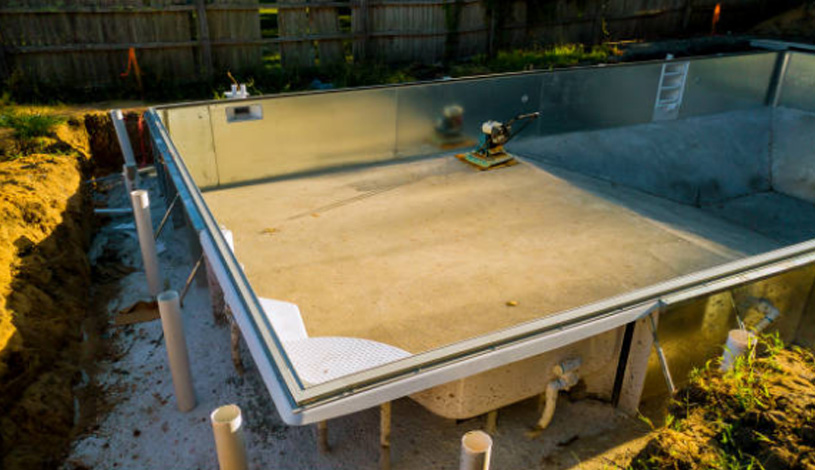What seems to be a very easy task from a layman’s point of view, is quite complex, time-consuming and cumbersome activity. It not just digging the ground and lowering the swimming pool in the cavity. It all depends upon the expertise and professionalism of the installer. And Australia has some of the most reputable fibreglass pool builders and installers.
Since summer is only just around the corner, there’s an increased demand for the services of fibreglass pool installers. Here, I’m not talking about Concrete, Vinyl or Above-the-Ground pools, as they are all a thing of the past. Fibreglass Pool is the happening thing. They are sleek, stylish, compact, hard-wearing, eco-friendly and easy-to-install at residences.
Major Concern Areas
- Sub-standard concrete coping around the deck
- No dewatering, auto-pumping or auto-filtration system
- Poor plumbing skills
- Putting fine White/Black sand or Fly-Ash as base material
- Creating patio with scrap paving materials
- Low-quality concrete leveling & faulty measurement
These are some of the critical ‘concern areas’ that must be addressed and adequately taken care of beforehand. Therefore, the services of a professional pool installer are always advised.
Process & Steps:
Visualizing the Pool Layout: A 3D (Three-Dimensional) model of the fibreglass pool is created, which helps in getting an exact measurement, size and space availability. It provides a precise idea as to how the pool is going to fit the backyard space. As a homeowner, you have the choice of placement of pool, before the excavation work begins.
Excavation: The inground fibreglass pool installer comes prepared with an excavating machine (Mini Excavator/Back-Hoe Loader). Digging of the ground is completed within hours. Digging is carried out as per the initial markings of the ‘dig sheet’. Not an inch more, not an inch less. This is the trait of a professional installer.
Lowering the Pool on the Ground: Post excavation work, the inground pool is lowered and laid on the sand and gravel base which was created for the swimming pool. Some installers even build short concrete columns and pillars like structures for resting the pool and then fill it with sand, gravel, and pebbles.
Exact Placement of the Pool: Either a mini-crane or a back-hoe loader is employed to lower the pool in its exact place as marked on the ground. Upon lowering, the installer carries out extensive checks to ensure that the base is perfectly level and there are no abnormalities. After this, the adjoining cavities are ready to be filled with concrete.
Plumbing Work & Cavity Filling: A backfilling work for fibreglass pools is carried out by mixing gravel, pebbles, sand, and cement. While the cavity filling is done, the pool is simultaneously filled with water for maintaining stability. It helps in settling the base by creating weight and pressure. Other poolside accessories such as PVC pipes, tiles, granite, mosaic, etc. are installed. Once that is done, auto-filter, auto-chlorinator, and pumps are installed. This is the most crucial part of the fibreglass pool installation.
Paving and Reinforcing: In order to give the swimming pool a neat and complete look, concrete is poured around the pool which creates a type of bonding and cohesion. Thus, permanently locking the structure with the ground. This completes the pool-decking work and thereafter paves the way for any landscaping activity. It needs to be left for at least 24 hours or more before it is ready to use.
THE CONCLUSION:
Your inground fibreglass swimming pool is now fully installed and ready to use. The summers are not going to be the same again. You can now beat the harsh Australian summer heat in style, right in your backyard. A cool splash at a private pool is what everyone desires. To sum it up, a composite fibreglass pool installation by a seasoned professional is relatively quick, seamless and easy.
